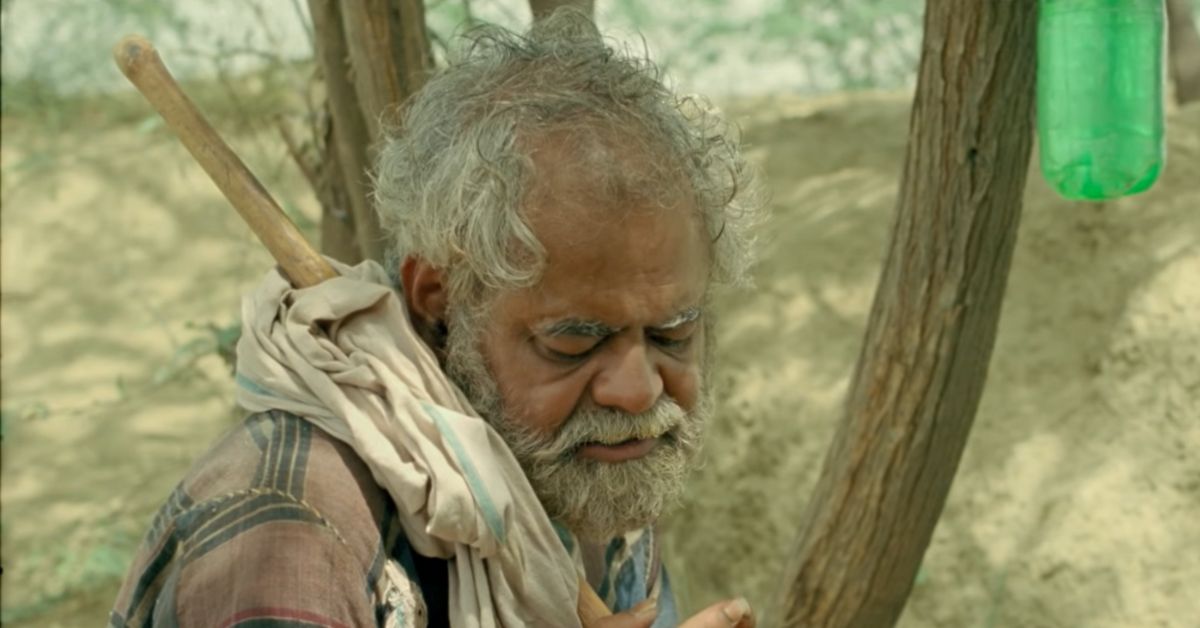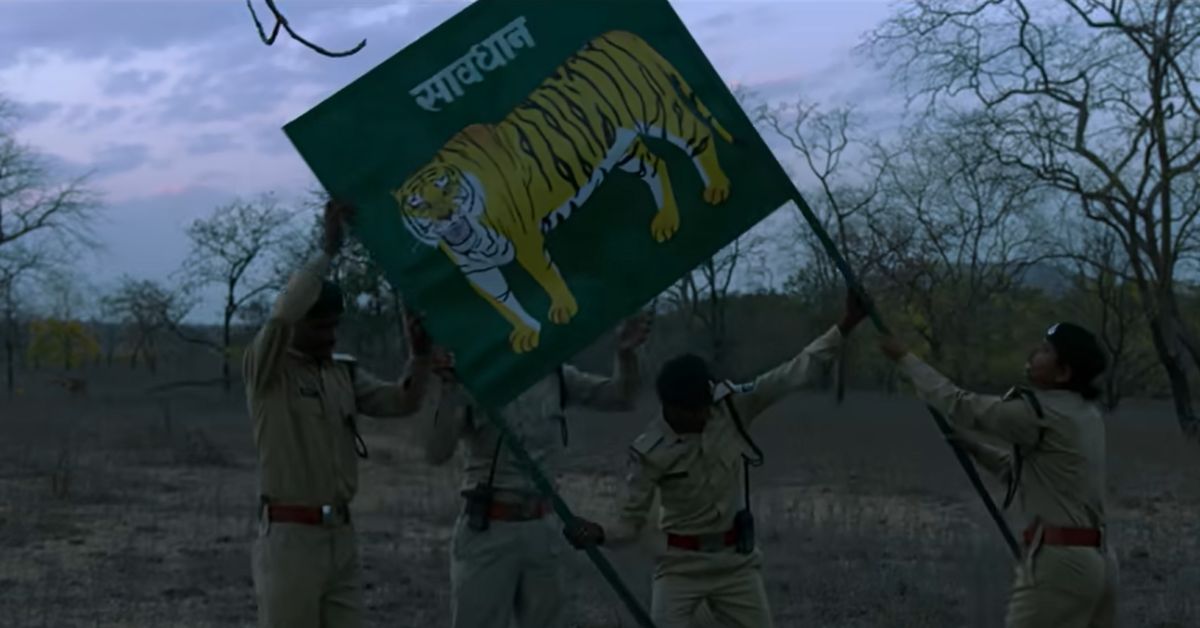Kadwi Hawa to Kantara: How Indian Cinema Championed the Fight Against Climate Change
In the last few years, Indian cinema has shown us the perils of climate change in various ways, from Kantara and Sherdil to Kadwi Hawa and Kaadan. Here’s a look at the films that championed nature and the urgent need to save the environment.

A few tourists are aboard a boat in the middle of the ocean, conversing about a famed yet bygone, underwater city. They discuss how this place was once where people arrived in planes, the nerve centre of art and culture, and where the biggest names in the region resided.
A passenger among the crowd recalls that though the city was thriving, people took advantage of what they believed were abundant resources, until one day when dark clouds shadowed the land, and it rained and rained and rained until there was no land left in sight.
Soon enough, it is revealed that this mystic underwater land was, once upon a time, the city of Mumbai, which was eventually submerged owing to a devastating rise in sea levels because of climate change.
This five-minute ad film, released in 2017, was Kadvi Hawa Badlo “issued in the public interest” which in turn inspired the movie Kadvi Hawa, released the same year. It ended with alarming statistics about how 40 per cent of Mumbai could be submerged in a matter of years.

“How often do we come across such mainstream forms of art, where nature takes the centre stage in story-telling?” Acclaimed writer Amitabh Ghosh spelt this concern in his non-fiction book The Great Derangement, published in 2016.
In the book, the writer depicts how climate change-based stories are often categorised in the ‘science fiction’ section, as though the content is fabricated. He further talks about how the capitalist agenda drives this absence of a realistic portrayal of environmental issues, making people insensitive to the urgency.
When we amalgamate the way Indian cinema has attempted to approach the topic of humans’ impact on the environment, we may find the answer to Ghosh’s question. Even as the topic misses mainstream cinema most times, there are a few moviemakers who are acknowledging that there’s a pressing need to address the future of our planet.
The consequences of human atrocity
The Sanjay Mishra-starrer Kadvi Hawa dared to be India’s first feature film on climate change.
Director Nila Madhab Panda wonderfully portrayed how climate change posed a threat to the survival of marginalised communities, how the absence of monsoon became small talk during bedtime, and how a primary school student struggled to understand how his area experiences only two seasons, even though textbooks claim otherwise.
Furthermore, the movie seamlessly equates climate calamity with the daily struggles of distressed farmers and climate refugees.
In 2021, the OTT film Boomika portrayed this threat in the opposite way, by diving into the eco-horror genre. The protagonist here is uber-rich and planning to get even richer by clear-felling a verdant hill-pocket for a “green” property. Mother nature decides to take care of herself by “punishing” the assailants who have done her wrong.
While Kadvi Hawa was set in the desiccating land of Chambal, Boomika was set amid the rainforests of the Western Ghats. The starkest difference between the two movies is in Boomika’s treatment of the audience. Here, the makers don’t leave the message to the viewers’ discernment, almost spoon feeding them the agenda of the movie that human atrocity is killing mother earth.
The same year, Rana Daggubati starrer Kaadan was released, which took the easier route of following the promise of full-on action entertainment; but, chose a plot that relies on elephant conservation, where poor forest dependents take on crony capitalists.
Sherdil (2022), a recent low-budget OTT release, tried to send the message of greed versus need with simple storytelling. Keeping the human-animal conflict at its heart, it delves deeper into the struggle of an individual in a remote forest village amid apathetic administration and places it squarely that the unquenchable thirst for more and more is usurping nature. Sherdil successfully blurs the line between a profit-at-all-cost businessman and an ignorant consumer.
Weaving a narrative rooted in reality
Deforestation, animal conservation, and climate calamity are well understood, but what about the effects of everyday callousness by India’s urban population?
Vikramaditya Motwane noticed this in Bhavesh Joshi Superhero (2018). Before chasing a greater evil, he conveyed that even cutting a single roadside tree or burning garbage is a social menace that we turn a blind eye to.
Arguably, in between all these, it was Amit Masurkar who stole the show with Sherni (2021). The movie animates the debate around human-tiger interaction, forest conservation, and development without forgetting the people who live by the forests.

It damned the forced narrative of pristine wilderness that denies rightful owners of their entitlements. In the same string, he garlanded the hypocrisy of denotifying protected areas for mining but restricting locals from collecting resources for their survival under the pretext that their occupation is killing the forest.
The movie depicts how honest, sensible efforts can sometimes be futile when the system is rotten. Based on true events, the movie ends on a dark note.
Moviegoers and critics also praised Masurkar for his 2017 film Newton, where, while puncturing the brouhaha of the largest democracy in the world, he subtly touched upon the utter absence of agency in tribal communities. Tribals are displaced and mines devour forests to satiate the purported model of growth.
The Forest Rights Act, 2016 acknowledges that tribal communities are the best keepers of the forest and instates them at the forefront of the forest conservation agenda. Along similar lines, a few movies attempted to explore the status of India’s tribal communities, whose lives and fates are closely tied to the looming climate disaster.
This was seen most recently in Kantara (2022), where actor-director Rishab Shetty tells the story of how forest-dwelling communities fight back to reclaim their agency.
While weaving the narrative, he relies on folklore to champion their own beliefs, practices, and knowledge — known as the Indigenous or Traditional Knowledge System (IKS-TKS) — which have evolved over time through the experiential learnings of generations living close to nature, independent of modern science.
This knowledge is not developed in labs or theories, but rather through daily life decisions.

Saying “not killing that animal during its breeding season will bring us fortune” is not superstition, but rather a mechanism to protect or manage vital resources that these communities depend on.
In Kantara, God appears to protect his people from exploitation — a cinematic expression of empowering the marginalised. The beauty of this movie, however, is that it has not only picked up environmental and forest issues so often ignored, but it set the tale in the backdrop of the very same land.
Environmental issues are complex and multi-layered, and in many ways, cinema has helped break the social barrier of concerns that we often feel uncomfortable with, dragging problems — from the periphery where they are often ignored — to the centre stage. Mainstream movie-makers are braving their way forward to dive into this complexity and are attempting to skillfully narrate these important stories to drive the point home. If you found our stories insightful, informative, or even just enjoyable, we invite you to consider making a voluntary payment to support the work we do at The Better India. Your contribution helps us continue producing quality content that educates, inspires, and drives positive change. Choose one of the payment options below for your contribution- By paying for the stories you value, you directly contribute to sustaining our efforts focused on making a difference in the world. Together, let’s ensure that impactful stories continue to be told and shared, enriching lives and communities alike. Thank you for your support. Here are some frequently asked questions you might find helpful to know why you are contributing?

Stories may not cause a revolution, but they pass the message on. Cinema reminds us that story-telling is an art, and that good stories need to be told. Whether the masses listen, is what comes next.
Written by Abhijit Dey; Edited by Divya Sethu
This story made me
-
97
-
121
-
89
-
167
















